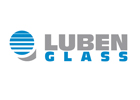Automation and digitalisation are making their mark on glass as a product and on how it is made. They therefore require digital forms of tracking and methods to manage and exploit the glut of data being produced.
This has repercussions for everything from project management, production and internal logistics right through to the customer. The glass industry is also faced with the challenge of doing its part to meet objectives set in climate policy, i.e., how to approach recycling and a circular economy concept once a glass product reaches the end of its lifecycle. Disposal and demolition firms alike need information on how to handle, separate and reuse materials.
Navigating this new world means collecting and evaluating as much data as possible, ideally using digital technologies – and this is where track & trace comes in. This process begins from the moment a company receives an order and can be based on methods including laser marking – something that is offered by HEGLA boraident GmbH & Co. KG, for example. These methods make it possible to organise and optimize the internal steps involved in production and track both products and processes throughout the entire lifecycle.
A virtual ID is created in the production planning stage and then laser-printed onto the glass pane before cutting it. This ID takes the form of a data matrix code that is 99.9 per cent machine-readable. As processing continues, the glass is identified multiple times, the code is read and each reading process is shown in the higher-level production system, along with the location and time at which it occurred. This provides a seamless overview that makes it possible to intervene quickly if anything goes wrong. Not only that, but it prevents glass from going missing and allows damaged panes to be remade quickly. The data programmed into CNC milling and drilling centres can be linked to each individual pane, cutting down on error rates caused by incorrect programming. It is possible to record every single piece of information about a pane, including the location where it is installed – a real asset later on if the pane has been damaged and needs to be replaced, or if it is going to be reused or recycled.
Creating links to customers
Laetus GmbH, a provider of hardware and software for quality control and track & trace systems, and Kezzler AS, which makes software for cloud-based applications, have chosen to follow a different path. The two companies have combined their track & trace technologies over as many as five different levels, with the aim of making end product information more transparent on the market through the use of QR codes (which act as digital fingerprints). This approach creates an added value for consumers, which in turn boosts sales: a study by MIT revealed that improving supply chain transparency results in a 2–10% increase in willingness to pay [Tim Kraft, León Valdés, Yanchong Zheng, 2019: Consumer Trust in Social Responsibility Communications: The Role of Supply Chain Visibility]*. The end customer is given a better insight into the manufacturing process, and / or can use digital platforms such as apps and websites to gain added benefits along with the product itself. This approach aims to foster more trust. For companies it also provides an opportunity to establish customer loyalty, enhance the reliability of the brand and quality standards, and prepare for developing products in the future. Production aspects such as recycling, the environmental footprint, supply chain monitoring and increased automation also play an important role. The system can be fully integrated into an existing production environment, even extending beyond the factory itself. It can end either in an interface with the customer’s production management system or in a cloud application that end consumers can use.
QR codes as a tool to engage with consumers and to provide useful product information.
Blockchain technology – for more than just cryptocurrencies
As digitalisation becomes more widespread, data security is steadily gaining importance for companies. Originally used for cryptocurrencies, blockchain technology is now increasingly being considered for applications in product lifecycle management (PLM) and becoming more attractive for industrial applications. Instead of storing transaction data on just one server, this technology duplicates it for multiple parties worldwide known as miners. This concept is why blockchain is also referred to as distributed ledger technology in many cases. A chain of consecutive data blocks is created whose stored information cannot be altered as soon as it is digitally sealed. As the block size is limited, the technology cannot be used to transport large quantities of data. In cases where an extensive data file needs to be secured, the hash value associated with the file is used: this is stored in the blockchain and creates a unique relation to the original file. The blocks are linked to one another using a cryptographic method. Each miner stores a copy of the entire blockchain, which prevents attackers from changing or erasing the blockchain unless they were able to gain control over more than 50 per cent of the miners.
Smart contracts have made it possible to automate business processes in the blockchain by storing executable program codes. The principle is based on the “if-then” rule: when a customer makes his or her most recent leasing payment for a machine, for example, the machine is automatically released for the period that follows this. A benefit of this method is that business partners can interact directly with one another, without the involvement of intermediaries. Oracles come into play in cases where data from external sources containing third-party information needs to be incorporated into the blockchain so that a smart contract can be reviewed or executed. In this context, an oracle is a kind of translator or interface that verifies information using real-world facts and events, then transfers the data to the blockchain and makes it available for smart contracts to use. This means that oracles can act as a trigger for smart contracts, setting in motion certain processes.
Companies always have to start with deciding whether the blockchain method is appropriate for their needs. The example of Prostep AG, an expert in PLM processes and solutions, shows the application of blockchain for managing the right to manufacture certain components using 3D printing. The project known as SAMPL – Secure Additive Manufacturing Platform (https://sampl.fks.tuhh.de/en/home.html), which is being funded by the German Federal Ministry for Economic Affairs and Energy, considers copyright and product liability law as a means of distinguishing original copies from counterfeit ones, issuing licences, safeguarding printing rights and paving the way for new value-creation models and business models. A consortium led by Prostep and consisting of ten companies and institutions has produced the following results:
- The development of a trustworthy supply chain from the rights holder to the printing service provider and right through to the end customer (chain of trust)
- The development of a reference platform with blockchain and printer integration
- Blockchain technology for licensing, documenting printing process data and tracking components
- Component tracking by means of RFID chips, QR codes or other methods
This platform is based on a data exchange solution called OpenDXM GlobalX, which makes it possible to execute 3D printing orders worldwide on demand (for spare parts, as an example), license printing processes and process documentation, and use blockchain technology to ensure traceability and provide evidence of authenticity. It provides users with access to processes that use much less energy than bitcoin blockchains.
“In addition to this application, there are numerous other ways in which blockchain technology could be exploited. To assess whether it would be suitable for an application, it’s useful to apply the golden rule of four out of seven: in other words, blockchain is worth considering in the context of an application if it would bring four out of seven potential benefits”, recommends Dr Martin Holland, Director of Strategy & Business Development at Prostep.
Blockchain in the glass industry
Turning to an example of a project involving glass production, a master’s thesis being written by Thomas Lenze at A+W Software GmbH analyses options for capturing and managing data in insulating glass production that uses manual and automated processes. One potential application would involve an insurance company using a smart contract application to gain access to stress testing information after a hardening process, so that it can then ascertain the product liability risks. Requirements for digital documentation in the context of building information modelling (BIM) also need to be considered.
The process chain is made up of the cutting and prestressing stages, along with the heat soak test, insulated glass production stage including the auxiliary materials and all the serial numbers, with everything working on the basis of the barcode on a single pane. The process as a whole involves recording data, assigning the barcode ID and linking this to the overarching system. This covers everything from the glassworks material batch, the individual pane assignments, the curing oven temperature/time profiles and the heat soak oven to the batch numbers for the sealants.
If this data is provided in a blockchain, it then becomes possible to create any number of channels that each deliver certain items of information to certain users, such as the insurance company in this case.
The contents of this article were the subject of an event held in June 2021 by the VDMA Research and Technology Industry Working Group, part of the Glass Technology Forum. The working group meets several times a year and discusses technical developments in mechanical engineering that are of relevance to the glass industry.
*Massachusetts Institute of Technology’s Sloan School of Management on the impact of supply-chain visibility on trust and its impact on purchasing decisions by the consumer. The key message of that study is “The increase in trust due to greater visibility accounts for a 3.3 percentage-point increase in sales”.
Important links:
glass.vdma.org
www.boraident.de
www.laetus.com
kezzler.com
www.prostep.com
www.a-w.de


























